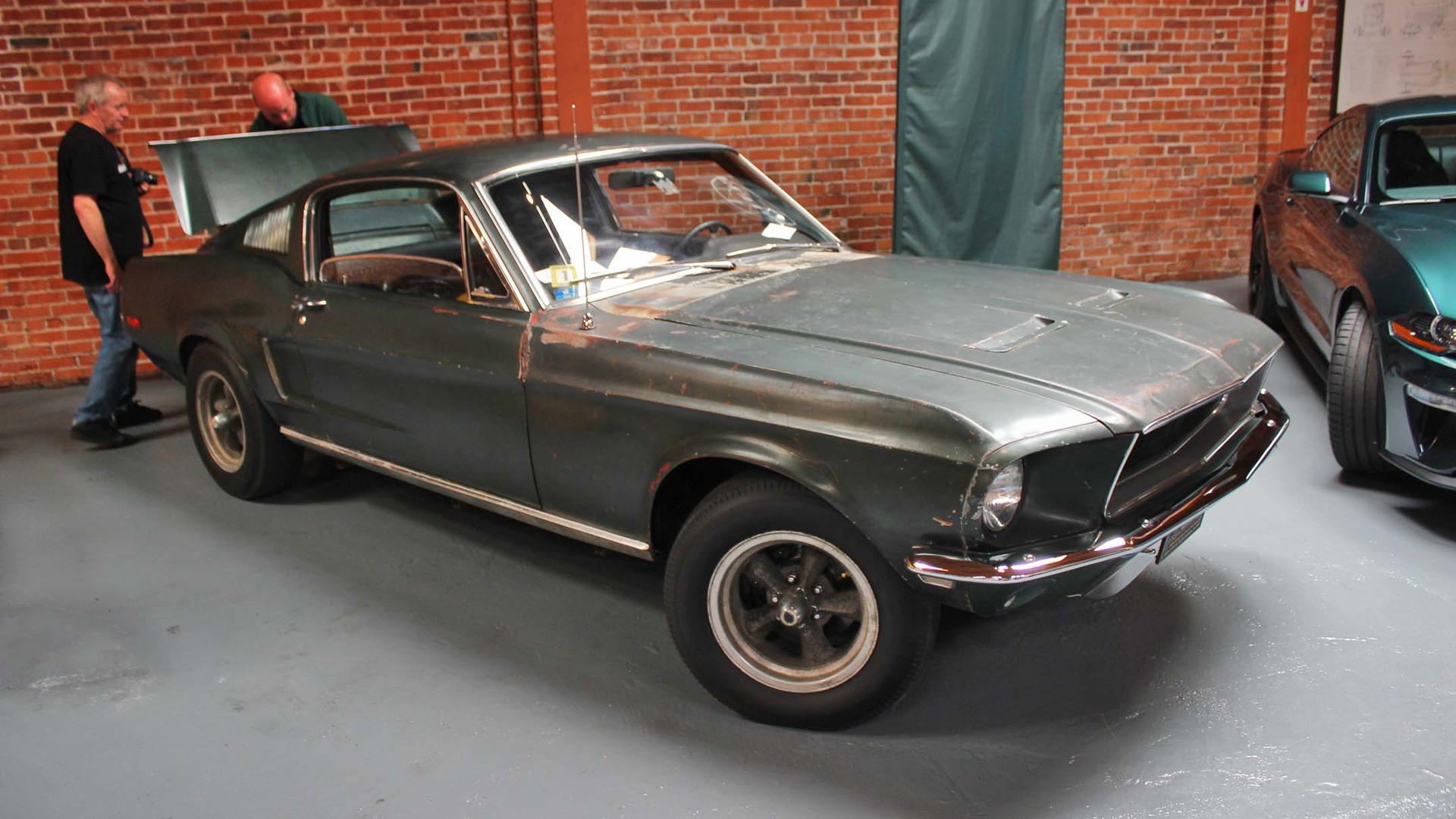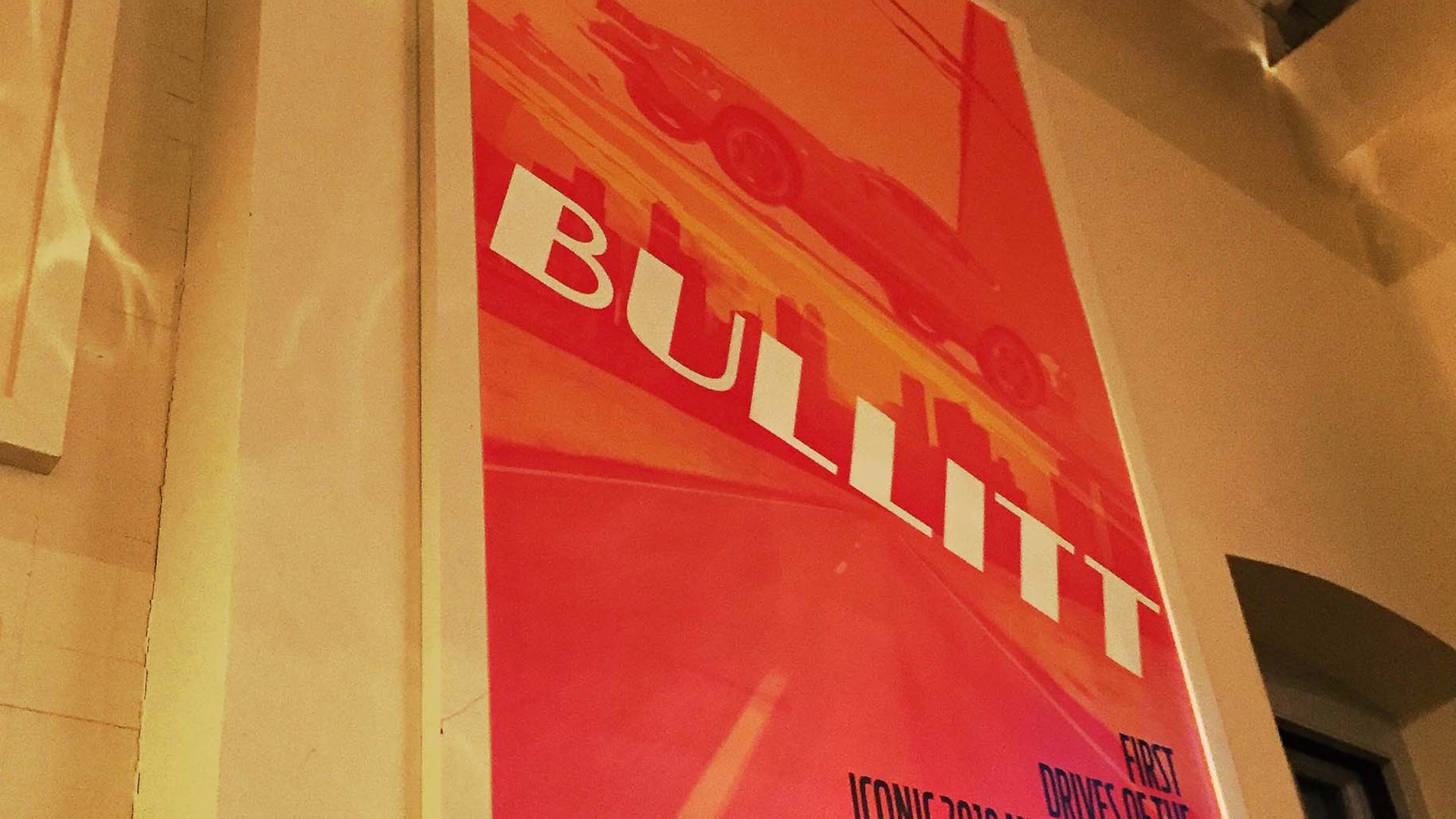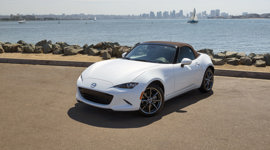I’m a fan of car chases. Classic or modern, there’s always a smattering of chase-heavy films on my “watch it again list” on Netflix, and on my DVD/Blu-Ray shelf. Chances are, if you’re reading a car site, the same can be said for you. There are few other examples in Hollywood, this side of various space operas, where a non-sentient being is actually one of the stars of the movie.
It was with this in mind that I pushed off for San Francisco and a date with the latest “special” Ford Mustang, the 2019 Bullitt. As far as I was concerned, we were heading to hallowed ground; San Fran is where Bullitt – and its centerpiece car chase – takes place, and we were going to be driving those very roads.
Before we drove them, however, we were given the chance to speak with Danny Bilson, father of The OC’s Rachel Bilson and professor of cinematography at the University of Southern California in Los Angeles. He also happens to be one of the creators of the mid-’90s TV show Viper, a show that he says featured “a car chase a week.” It also turns out that Bullitt was one of his favs, and if I wasn’t excited enough the night before our drive, a talk with him about the ins and outs of one of Hollywood’s most famous chases was just the ticket.

“When the call came into USC for a professor to talk about Bullitt, I was the first to respond,” Bilson says. “This is absolutely one of my favourite films.
Keeping it real
“Everything about the film was trying to be real, including shooting on the streets of San Francisco,” he continues. “The studio wanted them to come back to LA, and shoot it on the backlot.”
In addition to shooting on the streets, Bullitt’s director Peter Yates and star Steve McQueen (an accomplished racer himself) didn’t employ many camera tricks, including – for most of the scene, anyway – slow-cranking the camera to make the events on-screen appear to happen faster.
Instead, rudimentary camera rigs (essentially scaffolding attached to a rolling chassis) were used to track Frank Bullitt’s Mustang and his quarry’s Dodge Charger (which was originally supposed to be a Ford Fairlane) as they bounded down Taylor St. and hurtled through Laguna St. in real time. It looked fast because it was fast, with the cars routinely reaching speeds of over 100 miles per hour. That is no joke today let alone in 1968, and with mods that didn’t reach far beyond stuff like NASCAR rear springs, reinforced control arms, special Koni shocks and thicker anti-roll bars to boot. Because jumps, of course.
Ahh, the jumps down Taylor Street. Done without any ramps, they are probably the most well-known part of the chase, but they weren’t really supposed to be, at the outset.

According to Bilson, the sequence really only became such a large part because they lost the rights to shoot on the Golden Gate Bridge. Needing to find a new centerpiece, they set up cameras – eight of them – at the base of the hill, the top of the hill, alongside the road, and on the cars. You want reality? How about Steve McQueen, having to look around a massive camera rig attached to the hood, while he drifted though San Fran? That same shot was used numerous times in the film, albeit from different angles.
It’s why the infamous VW Beetle (the “Green Bug”) is seen in numerous continuity-breaking shots – because it’s all the same shot. You see, when you’re on public roads like this, you don’t have quite as much wiggle room, though it did take 10 full days to shoot the chase and a team of eight stuntmen to drive the various traffic vehicles throughout the chase.
Another realism add is the fact that McQueen did so much of the driving himself. Three stuntmen were employed for the rest; you can tell when they’re driving from the interior shots. If you see a man’s chin in the rear-view mirror as opposed to McQueen’s trademark baby blues, it’s one of three stuntmen: Buddy Eakins, Kerry Lofton, or Bill Hickman – the same Bill Hickman, it turns out, who helped pull a lifeless James Dean out of his Porsche that faithful day in 1955.

Old-school cool
“What’s amazing about this chase scene if we compare it to chase sequences now,” says Bilson, “it’s not very cutty. It’s not like a Transformers chase scene with tons of activity. I think that raw nature (of the Bullitt chase) is why it’s still exciting. Those are real people, driving cars, real hard. The audience can see that if they miss, they’re going to hit the car on the corner.” This actually happens about a minute in; you have to look real close to catch the moment, though.
“Now – I want a controller because it looks like a video game I can’t play. You start staging stuff and doing things that can only be done on a computer, and (viewers) can feel it.”
Proof of Bullitt’s almost off-the-cuff nature can be seen in a few places, notably a motorcycle crash that was added in because the production team thought it would be, as Bilson says, “cool to drop a bike.” Then there’s the famous sequence about a minute in where Bullitt does a reverse burnout. He’s doing that because he’d actually missed a scripted turn onto Chestnut St., and was forced to back up so he could reset.

“Chases today are all storyboarded and pre-visualized,” said Bilson. “(In Bullitt) it wasn’t pre-vizzed, it wasn’t super planned. They just put up the camera, and did the gag.” Chances are, those awesome reverse-elevens would never have happened had the Bullitt chase gone through that pre-viz process.
By the end of his presentation and our subsequent chat, that old school love of all things analogue was what really stuck with me, and brought me sharply back to the present and the adventure I was about to take.
It has to be said that for all its newfangled technology, from Sync 3 infotainment, to digital gauge cluster and electronic power steering, the 2019 Bullitt is a properly analogue car. Rear-wheel drive, six-speed manual transmission and naturally aspirated V8 power all solidify its place in the annals of Mustang, right up there with Inspector Bullitt’s sled.
Of course, as detailed as Bilson was, you really can’t get the full, 4D effect unless you try it yourself. Luckily, Bullitt’s production team’s insistence on keeping things real meant we could drive on the exact same roads they did.
So we did.

Until you experience Taylor St. from behind the wheel of a long-nosed muscle car, you can’t really appreciate what McQueen and his stunt doubles achieved.
The road is so steep that if anything happens to be on the road just below each intersection’s level crossing, you may not see it – or them. Coming up the road is even worse, since even pedestrians crossing within the crosswalk are basically impossible to see. Of course, there was no chance that there’d be any pedestrians during the shoot, but the road is imposing nevertheless. We also weren’t doing 100-plus mph, but like any twisty B-road, you don’t always need speed to be thrilled.
Sometimes, all you need is a long hood, a manual shift and the ghost of Frank Bullitt in the back seat. Yep, that’ll do.




















